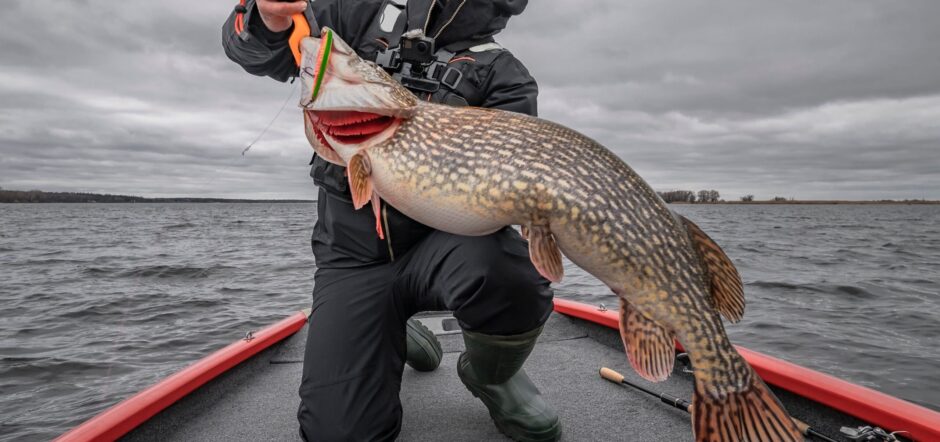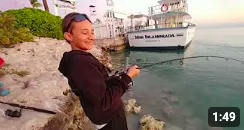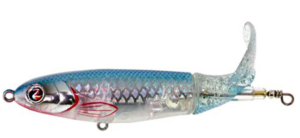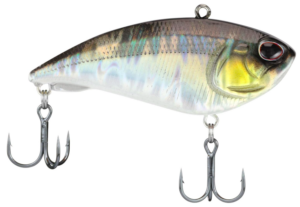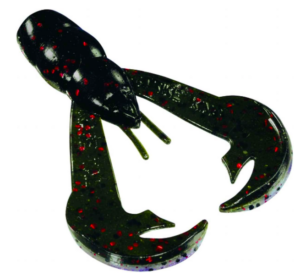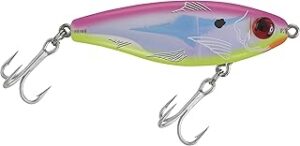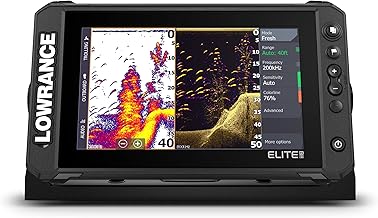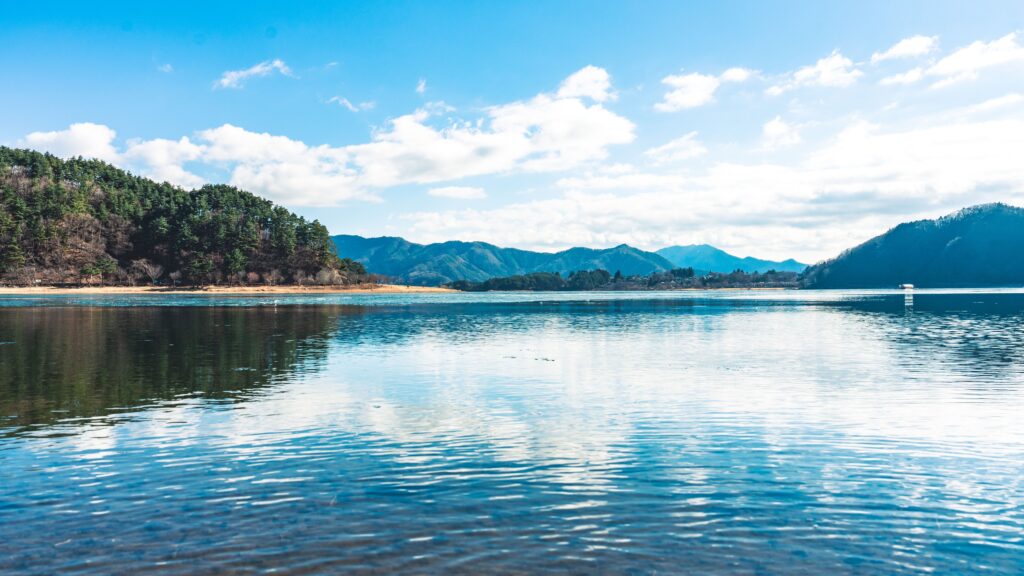
Northern pike tend to thrive in clear water, especially if the lake has a good weed line. Because pike are sight feeders, clear water gives them a big advantage over their prey. Northern pike can see their prey from a distance and move in to attack in just seconds.
Northern pike are usually found deeper in clear water compared to murky water. If a lake has a lot of fishing pressure, pike can easily move into water as deep as 20 to 40 feet deep. Even when the pike are feeding in the shallows, they tend to be found slightly deeper than you would find them in murky water. One exception to this is the spawn. During the spring, you can still find plenty of pike in water deep enough to just barely cover their back in clear water. They may be more cautious, but their instincts cause them to come into some very shallow water just after ice out.
Use Natural Colors
Natural-colored baits appear more realistic in clear water. Stay with natural colors that closely resemble what the pike are actually eating and you will get more bites.
On Sunny Days, Fish Deeper
On sunny days, pike will usually be found much deeper, except for the spring time during the spawn. Early in the year, deeper water may be 8 to 12 feet deep, however, from summer through fall, deeper water can easily be 20 to 40 feet of water. Learn how to fish deeper and you’ll do much better when fishing clear water.
Fish Low light Conditions
Pike are sight feeders for the most part, so the clear water actually helps them quite a bit. In murky water, low light conditions can actually make the bite more difficult. In clear water, it can be the opposite. Because the water is so clear, pike won’t need as much light to help them find an easy meal. During the low light conditions, you will usually find some active pike in shallower water. Instead of fishing 20 to 40 feet of water, you may find some active fish in 8 to 12 feet of water or 10 to 15 feet of water, which makes covering water a lot easier.
Use Fluorocarbon Line
Using lighter line will help anglers get more bites in clear water, but that isn’t really an option when fishing for toothy critters such as pike because they will just bite you off. Fluorocarbon line is close to invisible under water, so going with this type of line is a much better option than going with lighter line. Line your spools with fluorocarbon line or at the very least, a fluorocarbon leader and this will will help you catch a lot more northern pike in clear water.
Fish Faster
At times, faster-moving lures will work well in clear water because the faster movement gives them less time to figure out that your lure is not real. They either eat what passes by them or they go hungry.
Live Bait Can Help
Don’t rule out live bait either when fishing gets really tough. A live minnow may be needed to fool them into biting.
When All Else Fails, Finesse it Up
Lighter line is usually not a great tip for pike fishing because pike have sharp teeth and they will bite you off. However, you can get away with lighter line if you go with a much lighter rod. However, if you use a much lighter rod, you aren’t going to get very good hook sets unless you fish vertical. You aren’t going to have much success in clear water fishing vertical unless you fish deeper.
As you can see, there are a lot of howevers when fishing with light line and northern pike.
So let me help make this easier for you.
Light Line Pike Fishing Technique
Use 10 to 12 lb. Line
Go with Fluorocarbon Line
Use a Light Action Rod – This is So Important
Fish Vertical
Fish Deeper
Use Live Bait or Soft Plastics
Make Sure Plenty of Hook is Exposed – Also Important
Easy on the Hook Set
Light Drag – Super Important
There are a lot of variables here, but if you do it correctly, you can still catch plenty of fish this way. You do have to let the fish run quite a bit for this to work, so we don’t recommend using this technique with high water temperatures.
Water Temperature May Also Cause Additional Stress With This Technique
With light line, a bigger fish is going to make several long runs. This isn’t as much of a concern for catch and release when water temperatures are cool, but in the middle of summer with surface temperatures rising above 80 degrees, we don’t recommend using this technique because you’re going to end up killing a lot of bigger fish that should be released back into the lake.
If you are looking to catch a few fish for the dinner table, there is nothing wrong with this technique in the heat of the summer. Just make sure not to go too big with your baits so you can attract more of those mid 20s to 30 inch fish that many anglers prefer to keep for the dinner table.
